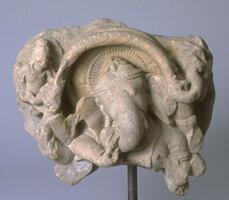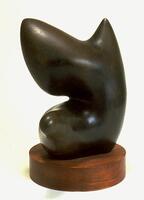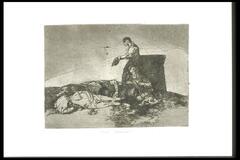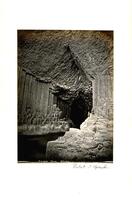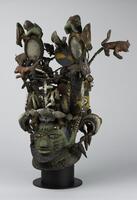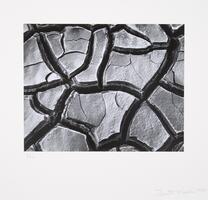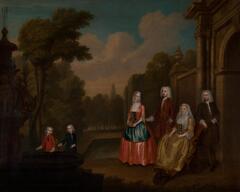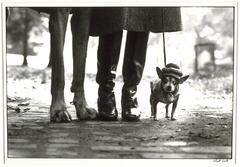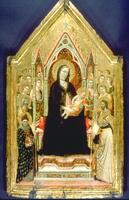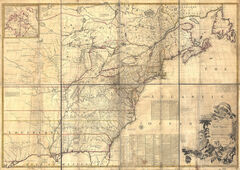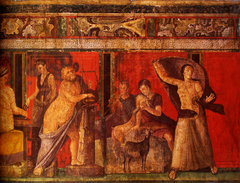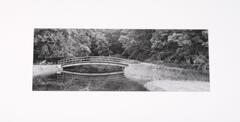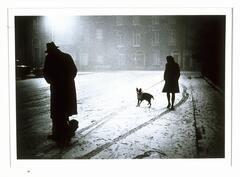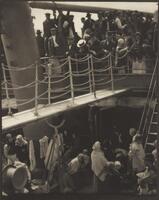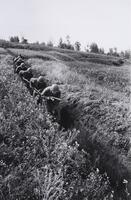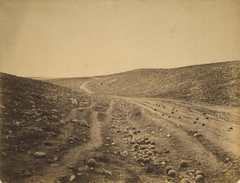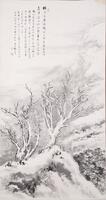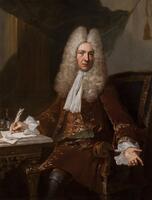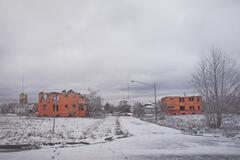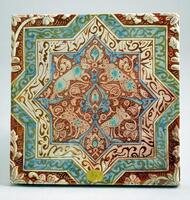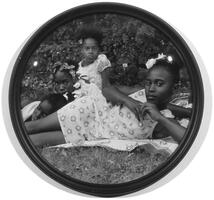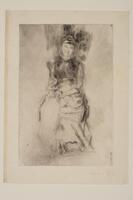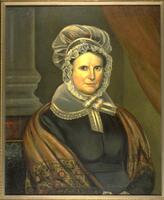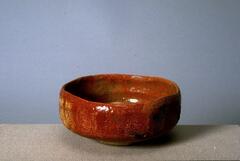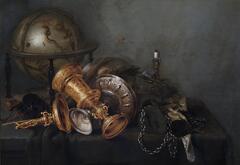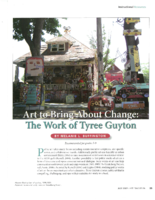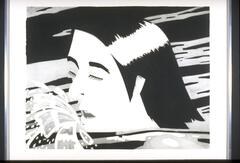Lesson Plan: Portraiture and Identity
“Mai Thu Perret: An Ideal for Living,” UMMA Teacher Workshop, January 22, 2011
Objectives
Students will create (either using physical layers or Photoshop) a self-portrait that represents the multi-faceted layers of their personality and identity.
National Core Standards
- Generate and conceptualize artistic ideas and work
- Convey meaning through the presentation of artistic work
Grades
8-12
Time Required
One or two class periods
Materials
- Photograph of student
- Map from the internet
- Reproductions of artwork by Nikki S. Lee, Mai Thu Perret, Frida Kahlo, Yasumasa Morimura, Shirin Neshat, Ken Chu, Orlan, Cindy Sherman
- Photoshop (optional)
- Transparency or tracing paper
Lesson
- Examine background and artworks by Nikki S. Lee (focuses on assimilation and taking on cultural / subcultural identities of others), and Mai-Thu Perret (focuses on social activism and utopian communities).
a. Nikki S. Lee was born in South Korea and educated in New York. She is interested in how one’s identity is constructed in relation to others—how our sense of self can be affected and altered by the presence of other people. Paris [206] is one of eight Paris photographs included in her Parts series, which Lee created from 2002 to 2005. Each Paris work shows the same woman (Lee herself) in different settings, posing and interacting with male partners. But viewers see only the hands or other body parts of the partners—using scissors, Lee literally crops the images of these men out of the photographs. She says, “The purpose of the cut is to make people curious about the missing person and to think how his identity has affected the woman who is left behind.” Because she uses her own disguised body in photographic work, Lee is often compared to other female artists such as Adrian Piper and Cindy Sherman. However, with her petite Asian body as the subject, Lee presents a nuanced inquiry into gender and racial stereotypes. In the Paris photographs, the settings are luxurious locations in that city, and her missing partner is a white male (his race identified through his skin and hair). In these well-appointed environments, normally accessible only to the French upper class, Lee’s “performed” self almost fits in, but not quite, though her clothes, makeup, and demeanor are perfect. This discrepancy causes us unease with our own gender and racial identities. (from http://umma.umich.edu/exhibitions/2015/in-focus-nikki-s-lee)
b. Contemporary multi-disciplinary Swiss artist Mai-Thu Perret “fuses feminist politics with classic modernist abstraction and utopian dreams. Her installations synthesize a range of media and genres--including literature, design, craft, and performance—-conjuring an imaginary alternate history of twentieth-century art, design, and social activism” (http://umma.umich.edu/content/mai-thu-perret-ideal-living). Perret does not use representational portraiture to reference questions of identity. How does this affect the interpretation and message of her work?
- Other artists to consider are: Frida Kahlo (exploring the multiple faces of identity),Yasumasa Morimura (assuming the glamorous identity of popular American icons of the opposite sex through costume and pose), Shirin Neshat (changing of the physical body through text on the body), Ken Chu (hybridity), Orlan (changing of the physical body through plastic surgery), and Cindy Sherman (representation of self as multiple identities).
- Each student should begin with a map, chosen because it represents a central memory or a place central to the student’s identity.
- On the map, layer a photograph of the student. If using Photoshop, students should use layering, marquee selection, magnetic selection, opacity of levels and zoom to further explore digital manipulation.
- Further layers, such as personal objects, natural materials, or patterns can be added and manipulated.
- The final layer is a hand-rendered transparent layer, attached to the surface of the work, giving students the final power to choose which parts of their projects to reveal or highlight and which to conceal. Like Lee, students can use scissors (or the crop tool) to edit their relationship to others and make the viewer question how their identity is related to their environment.
Part of 1 Learning Collection
Lesson Plan: Translating a Familiar Landscape
“Tradition Transformed: Chang Ku-nien Master Painte...
“Tradition Transformed: Chang Ku-nien Master Painte...
Lesson Plan: Collaborative Scroll of Images and Poetry
“Creative Literacies: Expanding our View,” UMMA Wor...
“Creative Literacies: Expanding our View,” UMMA Wor...
Lesson Plan: Compare and Contrast Drawing and Sculpture
UMMA Exhibition, “The Graphic Dimension: Prints and...
UMMA Exhibition, “The Graphic Dimension: Prints and...
Lesson Plan: Content and Style – Corresponding or Contradicting?
“Creative Literacies: Expanding our View,” UMMA Wor...
“Creative Literacies: Expanding our View,” UMMA Wor...
Lesson Plan: Setting the Scene – Descriptive Writing with Photography
“Teaching with Photography,” UMMA Workshop for Educ...
“Teaching with Photography,” UMMA Workshop for Educ...
Lesson Plan: Not a Failure . . . Just a Draft
“Creative Literacies: Expanding our View,” UMMA Wor...
“Creative Literacies: Expanding our View,” UMMA Wor...
Lesson Plan: Calligraphy and Radial Design in Islamic Art
Lesson adapted from Educator Resources, Victoria & ...
Lesson adapted from Educator Resources, Victoria & ...
Lesson Plan: Memory Maps, Using the Mitchell Map (1755)
“Benjamin West: General Wolfe and the Art of Empire...
“Benjamin West: General Wolfe and the Art of Empire...
Lesson Plan: Multipoint Perspective: Using Art to Teach Writing
“Creative Literacies: Expanding our View,” UMMA Wor...
“Creative Literacies: Expanding our View,” UMMA Wor...
Lesson Plan: The New Sublime and Photographic Landscape
“Teaching with Photography” UMMA Teacher Workshop,...
“Teaching with Photography” UMMA Teacher Workshop,...
Lesson Plan: Panorama Handscroll Using Multiple Literacies
Lesson inspired by Elaine Wilson’s “Charting the Wo...
Lesson inspired by Elaine Wilson’s “Charting the Wo...
Lesson Plan: Playing with Scale in Landscape or Still Life
“Tradition Transformed: Chang Ku-nien Master Painte...
“Tradition Transformed: Chang Ku-nien Master Painte...
Lesson Plan: Exploring the Emotional Impact of Portraiture Through Free Writing
UMMA Teacher Workshop, “Xu Weixin: Monumental Portr...
UMMA Teacher Workshop, “Xu Weixin: Monumental Portr...
Lesson Plan: Positive and Negative Space in Photography
“Teaching with Photography,” UMMA Workshop for Educ...
“Teaching with Photography,” UMMA Workshop for Educ...
Lesson Plan: Setting Up a Collaborative Short Story
“Teaching with Landscape Photography,” UMMA Teacher...
“Teaching with Landscape Photography,” UMMA Teacher...
Lesson Plans: Ideas for Writing with Portraits
UMMA Teacher Workshop, “Xu Weixin: Monumental Portr...
UMMA Teacher Workshop, “Xu Weixin: Monumental Portr...
Lesson Plan: Zoom In: The Significance of Detail
“Creative Literacies: Expanding our View,” UMMA Wor...
“Creative Literacies: Expanding our View,” UMMA Wor...
Rate this Resource
AVG: 0 | Ratings: 0
& Author Notes
Creative Commons by-nc-sa (Lesson based on “The Fluidity of Identity,” by Olivia Gude and The Spiral Workshop, University of Illinois at Chicago)Last Updated
March 6, 2017 1:19 a.m.Report
Reporting Policy

